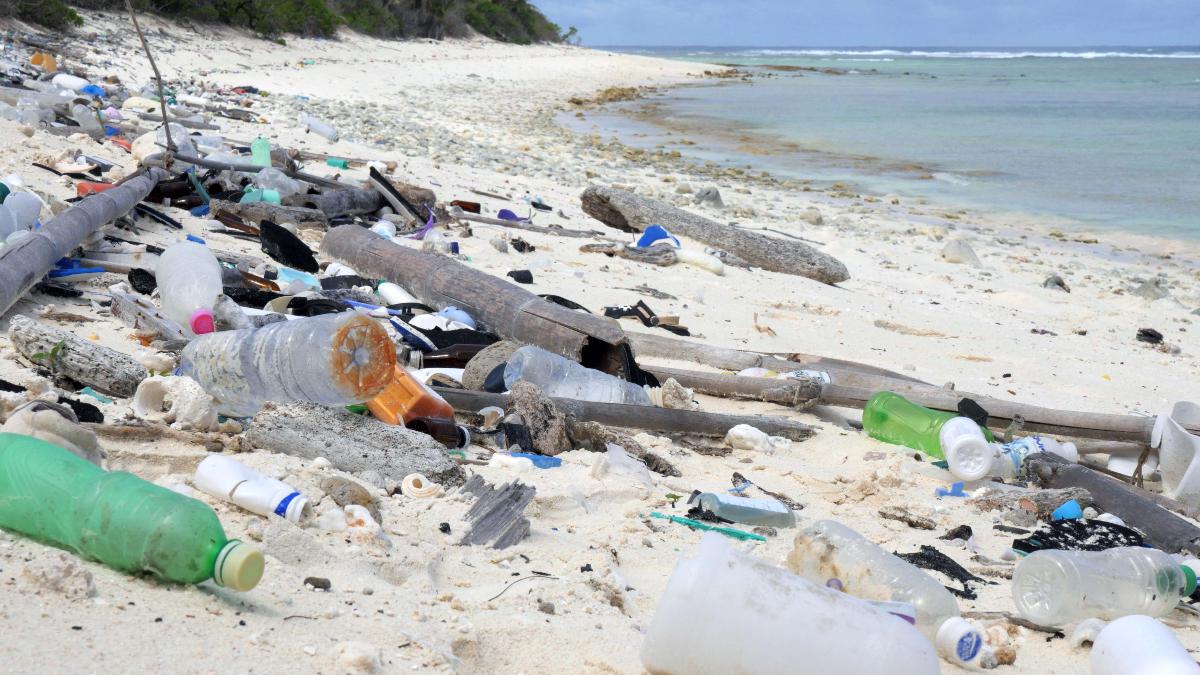
Plastic Pollution Raises Beach Temperatures, Threatening Marine Life, Study Finds

Plastic pollution threatens marine life in many ways, from entangling fish and seabirds to wreaking havoc on their digestive tracts when they mistake it for food.
Now, a new study has revealed another danger plastics pose to coastal animals: It can actually heat the beaches they call home.
“When you have plastic piling up and piling up, it creates this insulation layer – it rapidly raises the temperature to a point where it is likely unsuitable for most animals,” Dr. Jennifer Lavers from the University of Tasmania’s Institute for Marine and Antarctic Studies (IMAS), who led the new study, told The Guardian.
The research, published in the Journal of Hazardous Materials last week, looked at the extent and impact of plastic pollution on the beaches of two remote islands: Henderson Island in the Pacific and the Cocos (Keeling) Islands in the Indian Ocean. The researchers found a lot of plastic on the islands — up to three kilograms per square meter — even on beaches that were uninhabited. Further, they found that the plastic was having a measurable impact. They took daily temperature readings of beach sediment in six locations on the islands and found that the plastic had increased daily maximum temperatures by 2.45 degrees Celsius and decreased daily minimum temperature by 1.5 degrees Celsius.
“Sandy beaches have not been a focus previously, so this is the first time real-world in situ data on circadian thermal fluctuations of beach sediment has been collected – and it reveals that accumulated plastics increase daily temperature extremes,” Lavers said in an IMAS press release.
This increase in temperature could have serious impacts on marine life, Lavers explained, especially on animals known as ectotherms. These are animals that rely on outside temperatures to regulate their body heat, and many have adapted to very specific temperature ranges.
Beach-dwelling ectotherms include crabs and sea turtles. For sea turtles, warmer temperatures have been linked to an increase in female offspring. While this has previously been blamed on the climate crisis, Lavers told The Guardian that plastic pollution could be a contributing factor in some locations.
The hotter beaches could also harm meiofauna, small animals that live in beach sediment and are an important part of coastal ecosystems, as well as an important food source for migratory birds.
“They’re the equivalent of earthworms,” Lavers told The Guardian. “They’re basically the creatures that turn the soil over.”
This isn’t the first time Lavers has looked at the impact of plastic pollution on Henderson and the Cocos islands. In 2017, her team found that the uninhabited Henderson Island had the highest density of human-made debris anywhere on Earth. In 2019, they further found 238 tonnes (approximately 262 U.S. tons) of plastic on the Cocos (Keeling) Islands, including 977,000 shoes, mostly flip-flops, and 373,000 toothbrushes. The same year, they also found that plastic on the two islands was killing hermit crabs by the hundreds and tens of thousands as they mistook it for shells in which to make a home.
Lavers said the problem is only likely to get worse unless something is done to stem the plastic tide.
“With global plastic production currently doubling almost every decade and much of the plastic debris that accumulates in our oceans eventually making its way onto beaches around the world, the low and moderate debris loads we observed on Henderson and Cocos are likely to transition to high debris over the next few decades,” she told IMAS. “Clearly further study into the physical impacts of plastics on ecosystems is needed to understand the severity and scope of these issues, but we also need to make significant shifts in how we produce and manage plastic waste – and we need to do it urgently.”

 233k
233k  41k
41k  Subscribe
Subscribe 